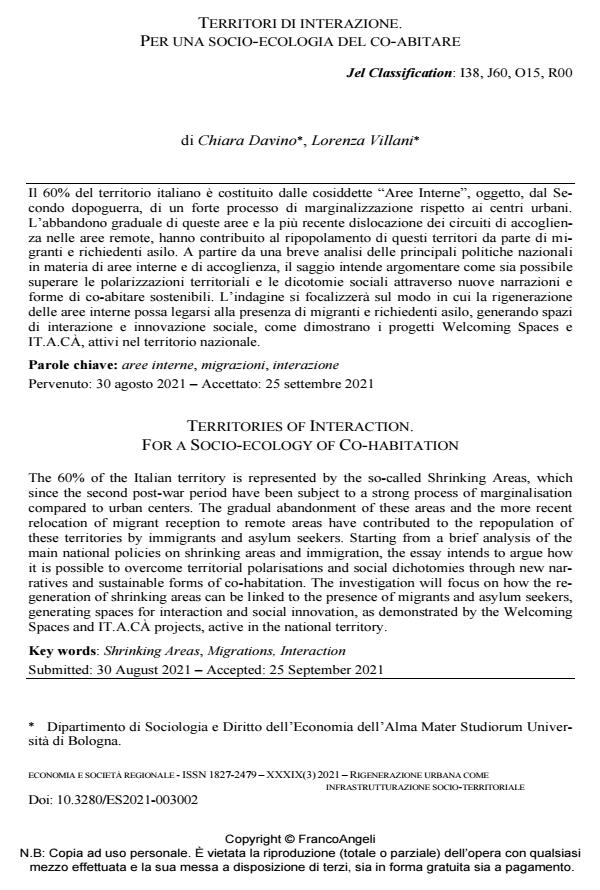Territories of interaction. For a socio-ecology of co-habitation
Journal title ECONOMIA E SOCIETÀ REGIONALE
Author/s Chiara Davino, Lorenza Villani
Publishing Year 2022 Issue 2021/3
Language Italian Pages 12 P. 15-26 File size 270 KB
DOI 10.3280/ES2021-003002
DOI is like a bar code for intellectual property: to have more infomation
click here
Below, you can see the article first page
If you want to buy this article in PDF format, you can do it, following the instructions to buy download credits

FrancoAngeli is member of Publishers International Linking Association, Inc (PILA), a not-for-profit association which run the CrossRef service enabling links to and from online scholarly content.
The 60% of the Italian territory is represented by the so-called Shrinking Areas, which since the second post-war period have been subject to a strong process of marginalisation com-pared to urban centers. The gradual abandonment of these areas and the more recent reloca-tion of migrant reception to remote areas have contributed to the repopulation of these territo-ries by immigrants and asylum seekers. Starting from a brief analysis of the main national policies on shrinking areas and immigration, the essay intends to argue how it is possible to overcome territorial polarisations and social dichotomies through new narratives and sustain-able forms of co-habitation. The investigation will focus on how the regeneration of shrinking areas can be linked to the presence of migrants and asylum seekers, generating spaces for in-teraction and social innovation, as demonstrated by the Welcoming Spaces and IT.A.CÀ pro-jects, active in the national territory.
Keywords: Shrinking Areas, Migrations, Interaction
Jel codes: I38, J60, O15, R00
Chiara Davino, Lorenza Villani, Territori di interazione. Per una socio-ecologia del co-abitare in "ECONOMIA E SOCIETÀ REGIONALE " 3/2021, pp 15-26, DOI: 10.3280/ES2021-003002